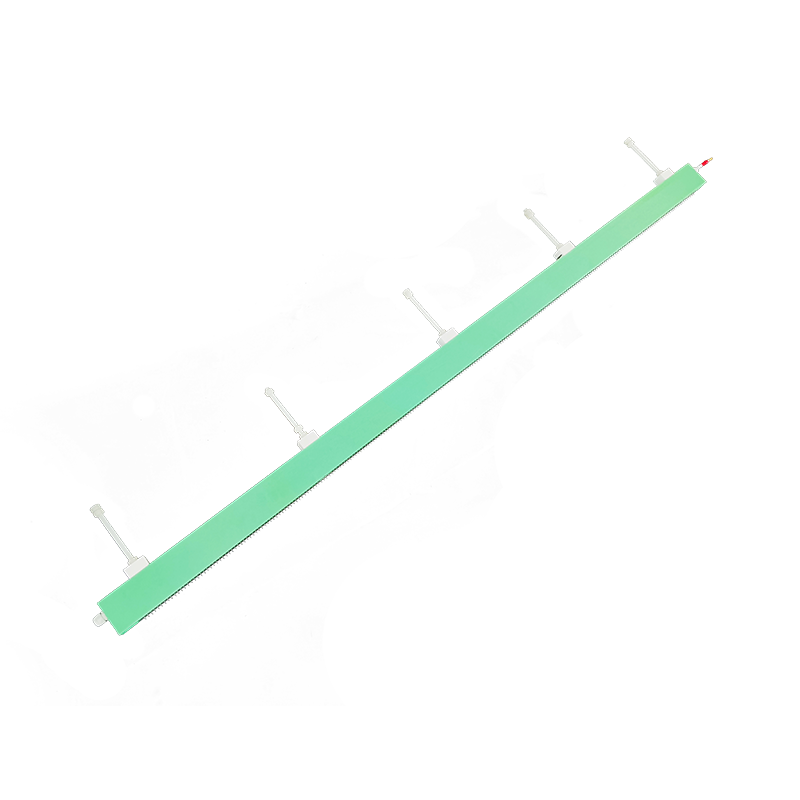Surge Suppression Methods for High-Voltage Power Supplies in Ion Implantation
In semiconductor manufacturing, the high-voltage power supply system of ion implanters requires kilovolt-level voltage ramp-up within milliseconds. This process often generates surge currents due to capacitive loads (e.g., ion sources and extraction electrodes). Surge currents not only damage high-voltage power modules but also degrade ion beam stability and reduce equipment lifespan. This article analyzes surge suppression methods for ion implantation high-voltage power supplies from three perspectives: surge mechanisms, suppression techniques, and system optimization.
1. Surge Generation Mechanisms and Hazards
Surges in ion implanters primarily occur in three states:
1. Startup phase: When the high-voltage power supply ramps from zero to the set value, the ion source potential surges abruptly, generating a reverse surge current through the loop, with peaks exceeding 10 times the steady-state current.
2. Shutdown phase: The potential difference between the ion source and extraction electrode disappears, and residual ions form a positive potential, inducing loop current converted into heat.
3. Load transients: Ion beam steps due to process parameter changes cause transient overvoltage (spike voltage), lasting microseconds with amplitudes exceeding hundreds of volts.
Long-term surge effects include power module breakdown, increased discharge risk at the load end, and higher maintenance costs.
2. Core Surge Suppression Technologies
1. High-voltage resistor discharge device
• Structural design: The high-voltage resistor is encapsulated in an open-ended insulating tube, dissipating heat via air convection to avoid temperature rise in sealed structures. Copper ring shims at resistor terminals enhance connection reliability.
• Operation logic:
◦ During startup, the resistor slows the ion source voltage rise, reducing surge peaks;
◦ During shutdown, it dissipates residual current as heat.
• Advantages: Simple structure, low maintenance cost, suitable for series protection between high-voltage power supplies and ion sources.
2. Dynamic negative feedback control circuit
• Topology: An N-channel MOSFET-based main loop monitors current via a sampling resistor (e.g., R₂). After amplification by an operational amplifier and comparison with a reference voltage, feedback through an optocoupler adjusts the MOSFET’s gate drive depth.
• Precision control: Negative feedback adapts to wide input voltage ranges (e.g., high-voltage inputs), resolving consistency issues in traditional thermistors due to temperature drift.
3. Multi-layer surge energy absorption technology
• Three-layer symmetric architecture: TVSS-based circuits handle common-mode surges, differential-mode surges, and residual surges. Examples:
◦ Layer 1: Gas discharge tubes (GDT) divert high-energy surges to ground;
◦ Layer 2: Metal oxide varistors (MOV) clamp medium-voltage surges;
◦ Layer 3: Transient voltage suppression diodes (TVS) absorb residual spikes.
• Efficacy: Tested energy absorption rate reaches 99.5% for 6kV/3kA combined surges, with residual energy as low as 34.17mJ.
4. Pre-charge and filter integration
• Pre-charge circuit: A pre-charge resistor at the power input limits initial capacitor charging current, switching to the main circuit once voltage nears steady state.
• EMI filtering: Common-mode and differential-mode inductors filter high-frequency noise, reducing surge propagation risk.
3. System-Level Optimization Strategies
1. Grounding and layout design
• Star grounding minimizes impedance and prevents surge currents from flowing through sensitive circuits.
• Surge protection devices (e.g., TVS, MOV) must be placed close to power input ports to shorten surge paths.
2. Enhanced electrical isolation
• Isolation transformers between high-voltage supplies and loads block surge conduction;
• Optocouplers isolate signal lines to prevent surge interference.
3. Thermal management and reliability verification
• Open insulating tube structures improve heat dissipation, avoiding resistor failure;
• IEC 61000-4-5 surge tests and SPICE simulations optimize parameters.
4. Conclusion and Trends
Surge suppression in ion implantation high-voltage power supplies requires a holistic approach involving component selection, dynamic control, and system layout. Future directions include:
• Intelligent control: Adaptive feedback algorithms based on real-time current sampling to improve stability across temperature ranges;
• Integrated modules: Combining resistor discharge, feedback circuits, and multi-layer TVSS into single modules to save space;
• High-frequency materials: Gallium nitride (GaN) devices with low parasitic inductance to address nanosecond-level surges.
These methods significantly mitigate surge risks in ion implanters, enhancing semiconductor manufacturing yield and equipment reliability.




















